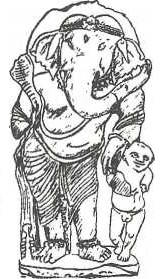Sthānaka
From Hindupedia, the Hindu Encyclopedia
By Swami Harshananda
Sthānaka literally means ‘standing posture’.
Images of deities installed in the temples are generally of three types:
- Sthānaka - standing
- Āsīna - sitting
- Śayāna - reclining
Images of the sthānaka type are the most common ones. These images can be samapāda[1] or viṣamapāda.[2]
References[edit]
- The Concise Encyclopedia of Hinduism, Swami Harshananda, Ram Krishna Math, Bangalore

